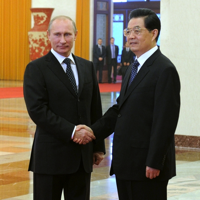A new report from the Stockholm International Peace Research Institute has shed light on one of most important developments in the international arms trade market of the past 10 years: the decline in Russian arms sales to China. While diplomatic relations between the two powers remain relatively strong, their trade in arms has collapsed since the middle of the last decade. The cause of this collapse stems not from any substantial political conflict between the two, but rather from "ordinary" tensions that afflict great power relations. While the greatest immediate impact of this development will be felt by Russia and China, the deterioration of the two countries' arms relationship is anything but a local concern. U.S., Indian and Japanese grand strategies depend to a great extent on the health of the Sino-Russian relationship.
Chinese arms imports from Russia grew tremendously at the end of the Cold War, as tensions between the two countries thawed and the Russian arms industry desperately sought an outlet for the massive production overcapacity inherited from the Soviet Union. Russian arms technology remained comfortably ahead of Chinese capabilities, meaning that Russia could supply China with relatively sophisticated equipment at a low price. This equipment included a wide range of weapon systems, including surface warships, fighter aircraft, submarines and a large variety of support equipment. China also purchased licensing rights for the domestic production of several Russian designs.
These systems had a tremendous impact on Chinese military capability. The Cultural Revolution and attendant disruptions had substantially set back Chinese military development, which was already starting from a low base. During the latter half of the Cold War, China depended on Soviet systems that were 10-15 years behind the Soviet state of the art. De facto alignment with the United States following normalization of ties helped, but did not provide the People's Liberation Army with a large-scale infusion of new military equipment. Arms subsequently purchased from post-Soviet Russia brought the PRC up to the Soviet standard and also helped the Chinese learn valuable lessons that they applied to domestic production.

